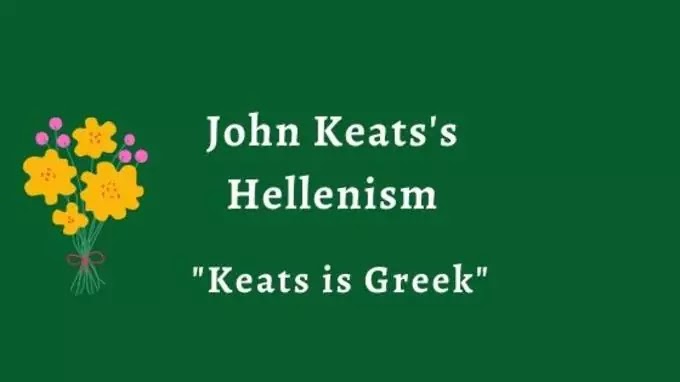81+ John Keats Poems Greek Mythology
Keats among the Romantics was different in many ways especially in mood temperature spirit and love of Greek art culture and mythology.
John keats poems greek mythology. Escapism is the most important ingredient of romantic poetry. Several of Keats longer poems such as The Fall of Hyperion or Lamia often take place in a mythical world not unlike that of classical antiquity. Greek mythology a dryad is a female spirit attached to a tree. It was Shelley who first expressed his opinion that Keats was a Greek.
Keats looks back and lives again in the time as we find in the poem Ode to Psyche When holy were the haunted forest boughs Holy the air the water and the fire. Keats Quests for Beauty. Other poems of Keats that ploy with the Greek myths are Lamia Hyperion and the Fall of Hyperion majorly in the lengthy poems. In Endymion John Keats takes the legend of a shepherd who fell asleep on Mount Latmos and captivated the goddess of the moon Cynthia who fell in love with him.
He borrowed figures from ancient mythology to populate poems such as Ode to Psyche and To Homer. In Keats world in Keatsian poems the world is made up of myth and legend. It has been named after its hero Endymion a character taken from Greek mythology. Keats Hellenism on his love for Greek arts sculpture and mythology has made him distinct in the gallery of Romantics.
Towards the creations of Greek mythology Keats was attracted by an overmastering delight in their beauty and a natural sympathy with the phase of imagination that created them. For Keats ancient myth and antique objects such as the Grecian urn have a permanence and solidity that contrasts with the fleeting temporary nature of life. He is a passionate lover of beauty. The Romantic poets and especially John Keats were deeply influenced by ancient Greek mythology.
Ode on a Grecian Urn is basically a monument of the poets power of entering imaginatively into the another world. It is available in the poetry of John Keats and makes him the best romantic poet. He uses images of trees the wind and brooks to trigger the readers senses and make them feel as if they too are experiencing the cold of winter and the warmth of memories. Beauty is the religion of John Keats.
This is also the case in Melancholy whose imagery is made up solely of almost-religious motifs and Greek myth and the splash of colour ruby grape which helps to ironically bring Ode on Melancholy to life. Pipe to the spirit ditties of no tone. He can find it in birds in clouds in art in forests in flowers even in Greek mythology. Keats had an enduring interest in antiquity and the ancient world.
He borrowed figures from ancient mythology to populate poems such as Ode to Psyche and the ode On a Grecian Urn. 16 Full of the true the blushful Hippocrene In Greek myth Hippocrene was the name of a spring that the winged horse Pegasus created by stamping its hoof into the ground. As the very titles of these pieces evoke these deal with and lull ancient Greek mythology with painting of Keats imagination and his gifted gift of powerful lyricism. As Keats mind was impregnated with Greek literature and mythology he habitually chooses Greek stories for his poetry like Endymion1818 Lamia1819Hyperion1818Ode to Psyche1819Ode on a Grecian urnThe eve of stAgnes1820 etc.
Endymion is a long narrative poem divided in four books. Fair youth beneath the trees thou canst not leave Thy song nor ever can those trees be bare. Bold Lover never never canst thou kiss.

